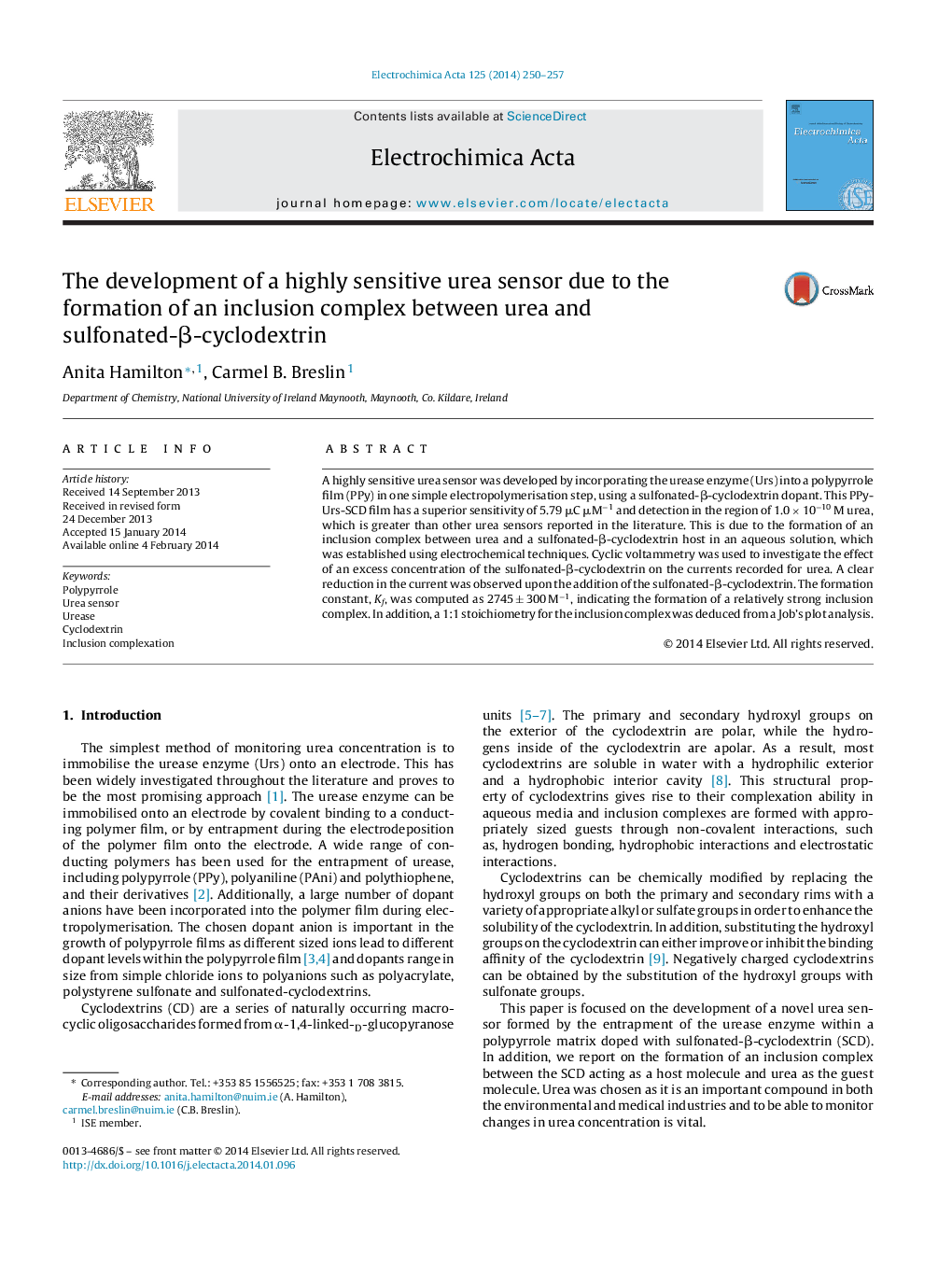| کد مقاله | کد نشریه | سال انتشار | مقاله انگلیسی | نسخه تمام متن |
|---|---|---|---|---|
| 186221 | 459609 | 2014 | 8 صفحه PDF | دانلود رایگان |

• A novel urea sensor was developed using polypyrrole to entrap the urease enzyme.
• The presence of the urease enzyme was confirmed using SEM and EDX analysis.
• The urea sensor doped with SCD has a sensitivity of 5.79 μC μM−1 towards urea.
• The formation of an inclusion complex between SCD and urea was investigated.
• A 1:1 inclusion complex was established with a formation constant of 2745 + - 300 M−1.
A highly sensitive urea sensor was developed by incorporating the urease enzyme (Urs) into a polypyrrole film (PPy) in one simple electropolymerisation step, using a sulfonated-β-cyclodextrin dopant. This PPy-Urs-SCD film has a superior sensitivity of 5.79 μC μM−1 and detection in the region of 1.0 × 10−10 M urea, which is greater than other urea sensors reported in the literature. This is due to the formation of an inclusion complex between urea and a sulfonated-β-cyclodextrin host in an aqueous solution, which was established using electrochemical techniques. Cyclic voltammetry was used to investigate the effect of an excess concentration of the sulfonated-β-cyclodextrin on the currents recorded for urea. A clear reduction in the current was observed upon the addition of the sulfonated-β-cyclodextrin. The formation constant, Kf, was computed as 2745 ± 300 M−1, indicating the formation of a relatively strong inclusion complex. In addition, a 1:1 stoichiometry for the inclusion complex was deduced from a Job's plot analysis.
Figure optionsDownload as PowerPoint slide
Journal: Electrochimica Acta - Volume 125, 10 April 2014, Pages 250–257